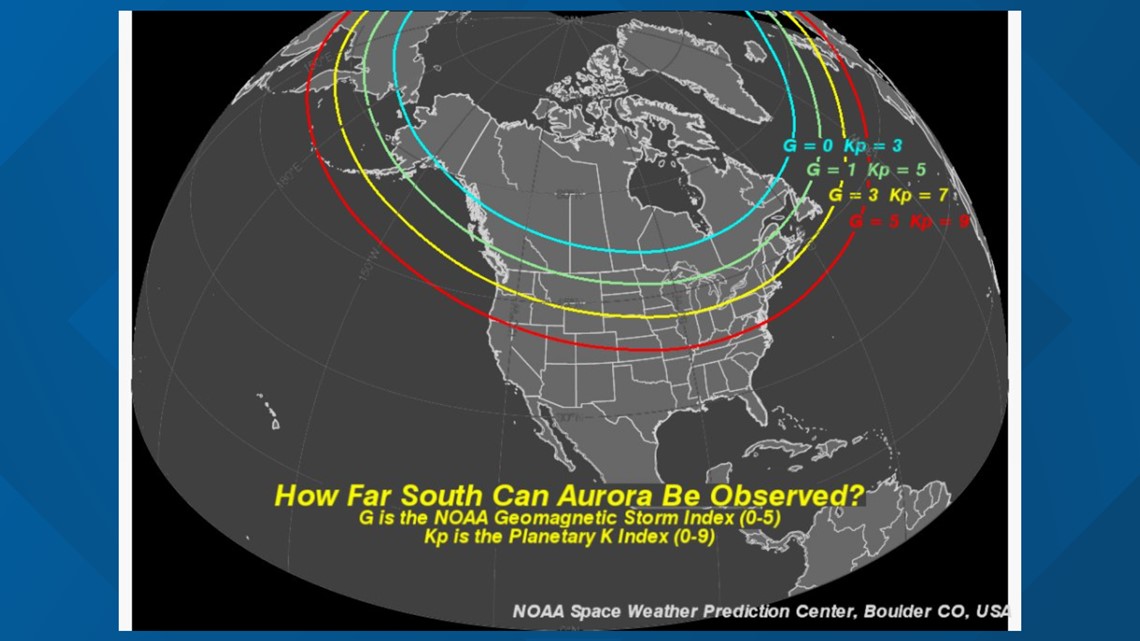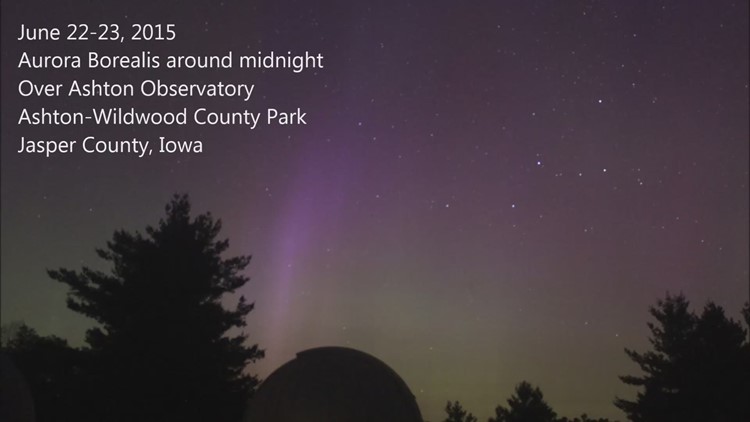DES MOINES, Iowa — Believe it or not, there is a chance that parts of Iowa will catch a quick glimpse of the rare Northern Lights over the next few days.
Northern Iowa, and most of the upper Midwest, is just on the edge of the expected visibility for the lights, so it will be a rare treat if they do become visible in our state.
On Tuesday, NOAA (National Oceanic and Atmospheric Administration) and SWPC (Space Weather Prediction Center) issued a strong Geomagnetic Storm Watch (G3) for the next three days.
Forecasters at the SWPC say the watch was issued after a coronal mass ejection (CME) and strong C7 solar flare occurred early this week.
According to the Space Weather Center, coronal mass ejections are "large expulsions of plasma and magnetic field from the Sun's corona. They can eject billions of coronal material and carry an embedded magnetic field that is stronger than the background solar wind interplanetary magnetic field."
Due to these occurrences, SWPC says they expect strong storm levels (G3) to occur on December 10th, with a reduction to moderate storm levels (G2) on December 11th.
SWPC forecasters note that a G3 storm is not dangerous, but may lead to a few communication disruptions. There is a positive side of this event, though!
The Northern Lights, or Aurora Borealis, is typically visible farther south than normal in these instances.
So what does it mean for Iowa?
It means the Northern Lights may be briefly visible across parts of northern Iowa on Wednesday night and Thursday night.
In a G3 setup like the one we are expecting this week, the Northern Lights are typically visible, on clear nights, as far south as the yellow line. That does stretch into at least the northern section of the state!


With a clear sky expected Wednesday night in Iowa, this would present the most optimal time to try to see the Lights. Thursday night will likely be much cloudier, and therefore more challenging to see.
NOTE: This is not a guarantee, as geomagnetic storm intensity is an incredibly difficult phenomenon to predict.
In the update, the SWPC issued the following statement: "While SWPC forecasters are fairly confident in CME arrival at Earth, timing, and geomagnetic storm intensity are less certain. Continue to monitor our SWPC webpage for the latest conditions and forecast."
RELATED: WEATHER LAB | Facts about fog



